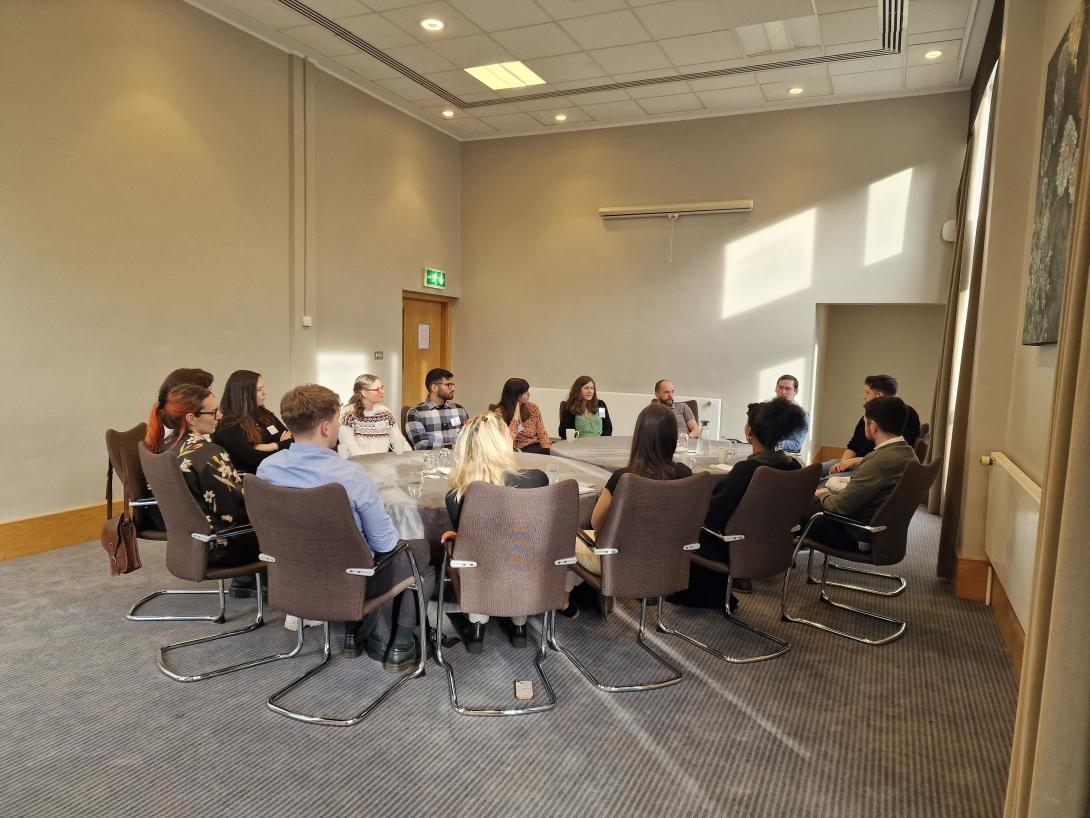Translating discoveries from the lab into the clinic is a key part of the UK DRI’s mission. However, there can sometimes be a disconnect between discovery and clinical research, resulting in challenges in turning research findings into tangible impacts for patients. Early career researchers (ECRs) from the UK DRI’s Vascular Theme discussed current issues in translating from lab to clinic and back again, at a lively workshop in Edinburgh.
Cognitive tests
Assessing cognition is essential in clinical research, to monitor and understand disease progression. Replicating these tests in animal models can generate vital insight into the drivers of the behavioural changes seen in human disease. However, there are limitations to modelling human behaviour in animals – it is obvious that mice in particular cannot simply be thought of as tiny humans; their cognitive abilities and social behaviours are not always comparable to ours.
Matt Padgett, a PhD student at the University of Nottingham, asked:
“Could it be more representative to study innate animal behaviours, such as nesting and grooming, rather than conditioning animals to mimic human behaviour in the form of mazes and cognitive tasks?”
Perhaps reconsidering the way we assess cognition in animal models could help to overcome some of these issues in translating animal studies into human trials. Indeed, a major new Grand Challenge project at the UK DRI seeks to do exactly this, employing the phenomenon of neural replay, which is well conserved between rodents and people.
Imaging
Similar questions around translatability arise when thinking about brain imaging. Brain cells in rats and mice versus humans are similar, but there are key differences that must be taken into consideration.
At a microscopic level, human and rodent brains are nearly identical, sharing the same organization and cell types. At the macroscopic scale, the two are very different. While the general plan and the regions are the same, mouse brains are, of course, much smaller. In addition, mice have much less white matter than humans, and their brains don’t have the typical folded surface pattern observed in humans and bigger species.
researchers attended the meeting

at the meeting discussed issues in translating findings from the lab to the clinic
Dr Audrey Chagnot, a postdoctoral researcher in Dr Axel Montagne’s lab (UK DRI at Edinburgh), explained:
“In my view, more than focusing on reducing the differences between preclinical and clinical, we must emphasize the complementarity between the approaches. Clinical studies observe the human population and report what is going wrong. Preclinical studies elucidate the fundamental biological mechanisms in highly controlled models. Sometimes an idea of therapy emerges of it. Clinical studies observe how the patients respond to the therapy. It is a constant dialogue between the two.”
Collaboration
In addition to these practical considerations, the ECRs felt strongly that better understanding of each other’s work would benefit both clinical and preclinical researchers. Some were surprised to learn that many preclinical researchers have never met a person living with dementia. Ideas including a buddy scheme, where clinical and preclinical researchers are matched and spend time within one another’s research environments, and a PhD programme including both clinical and preclinical rotations, were floated as possible solutions.
Dr Yolanda Ohene, a postdoctoral researcher at the University of Manchester, said:
“Discovery and clinical researchers working more closely together would be hugely beneficial. I think a buddy scheme would be an excellent way of exchanging ideas while keeping a focus on the bigger picture. There is also much value in events such as this one hosted by the UK DRI. It gave us the opportunity to expand our networks, formulate new ideas and create potential future collaborations – I gained a lot through attending this year’s workshop!”
There are knowledge gaps on both sides, and filling these is dependent on continuing to promote interactions between preclinical and clinical researchers and fostering a team science approach to research. In doing so, we may begin to better bridge the gap between discovery and clinical research and ensure a true bench to bedside approach to dementia research moving forward.
Thank you to Dr Una Clancy for her contributions to this article. Find out more about all the UK DRI Research Themes here.
Article published: 24 April 2023
Image credits: Dr Sarmi Sri
